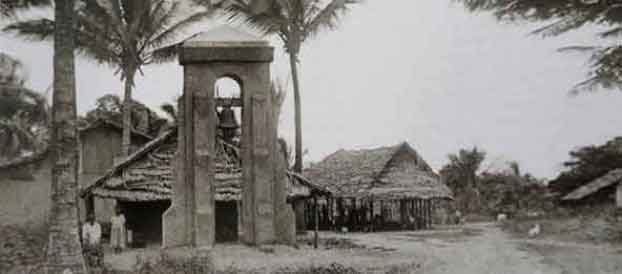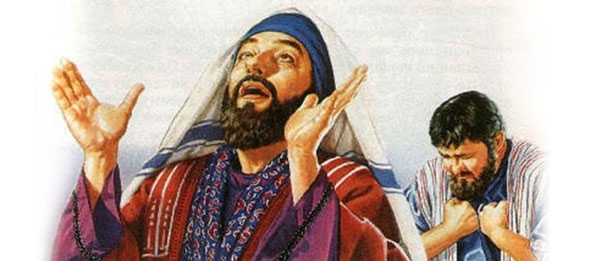Jesus and Women
John 20:1-2, 10-18
“How many donkeys do you have?” the missionary asked. “None, ‘cause I have five wives,” said the tribesman. This was part of a recent conversation between a Kenyan Masai and a missionary I know. Like the Masai culture today the world that Jesus lived in was dominated by men, and women were second class citizens. This was a society where daughters were valued less than sons; rabbis only taught men; women were not accepted as witnesses in court; wives were owned and looked to their husbands as masters; a wife could not initiate a divorce; her place was in the home; and polygamy was rife.
Against this dominantly male background Jesus did the unthinkable! The first people he appeared to after his resurrection were women!* (See the scripture above) Not one man was present! ♦ But this was not all; angels appeared to the women too, and as if that were not enough, the women were given messages for the men! Jesus said, “Tell them (the men) I am returning to my Father and your Father” (17). The angels said, “Tell his disciples: ‘He is risen from the dead and is going ahead of you into Galilee. There you will see him’” (Mt 28.7). This was embarrassing; the apostles were initially ignored and expected to listen to the testimony of women! Think about this for a moment. An apostle of Jesus had to be a witness of his resurrection (Ac 1.22). Paul considered himself an apostle of Jesus when he said, “Am I not an apostle? Have I not seen Jesus our Lord?” (1 Co 9.1) But these women, Magdalene and company, saw the resurrected Jesus before Paul or any of the twelve did! But it does not stop there. The word ‘apostle’ means ‘sent one’ – an apostle of Christ is someone sent by Christ with a message for others – but these women were sent by Christ to the apostles with the good news of the resurrection before the apostles were sent with the same message to ‘all nations’ (Mt 28.19)!
Now, before we draw any conclusions as to why Jesus would appear to women first it is worth noting that these actions were entirely consistent with his behaviour towards women in general. Let us site a few examples:
Mary Magdalene was the leading woman at this first appearance and heads many lists of women in the gospels. She was probably known as Mary of Magdala – a town in Galilee – and later called ‘Magdalene’ (Lk 8.2). She is identified in a number of places as a woman who was delivered from seven demons (Lk 8.2, Mk 16.9). The number seven may be a cultural cliché meaning ‘completely’ or ‘totally’ – demonized. Her deliverance must have been quite impacting for the disciples to continually identify her by it.
Many people assume Magdalene was a prostitute. There is no real evidence for this. The assumption is based on people reading about her in Luke 8.2 and associating her with the ‘sinful woman’ at the end of Luke 7. To assume that the sinful woman is Magdalene is to assume too much. What we can say, however, is that Luke may have put the list with Magdalene and the other female followers just after the story of the sinful woman to reinforce the fact that Jesus had delivered, healed (8.2) and forgiven (7.48) many women who were now devoted to him. We can also say that what Jesus said about the sinful woman, “Her many sins have been forgiven – for she loved much. But he who has been forgiven little loves little” (7.47) did apply to Magdalene and many of the others too. Their lives were so changed by Jesus that they were willing to do anything for him; even support him “out of their own means” (8.3). Magdalene’s personal love for Jesus was clearly demonstrated in that she remained at the tomb crying when Peter and John returned home (Jn 20.10-11). And this was the moment Jesus chose to appear to her.
Another woman who was greatly impacted by Jesus was the Samaritan woman that met Jesus at the well (John 4.4-30). Jews did not associate with Samaritans; in fact they would not even eat with them as they considered their cups and plates to be unclean. In addition it was not culturally correct for men to start lonely conversations with unknown women (27). Here again Jesus does the unthinkable. He starts a conversation with a Samaritan woman by asking her for a drink from her ‘unclean’ jar. This one all-inclusive act softened the race-gender-religion barrier and paved the way for further conversation. Jesus then used the woman’s focus on jars and drinking to talk about the need for spiritual water. Later he goes even deeper by highlighting a source of pain in her life, “You have had five husbands, and the man you now have is not your husband” (18). The woman is shocked but also moved. Jesus had seen the pain of a rejected and marginalized member of society and had taken the time to show that there was a God who knew her and cared for her. The woman was so impressed with all this that she went and told the people of her town to “Come, see a man who told me everything I ever did” (29) and many in that town came to see Jesus and believed (41).
Jesus also did the unthinkable with the woman who was caught in adultery (Jn 8.1-11). The teachers of the law and Pharisees accused her before a group that Jesus was teaching in the temple courts. This was extremely degrading for the woman and they hadn’t bothered to bring the man who was caught with her. The religious leaders said to Jesus, “In the Law Moses commanded us to stone such women. Now what do you say?” (5) Jesus found himself in a pressure situation, but did he side with the all-male group of accusers? No, in fact Jesus turned the spotlight off the woman’s sin and focused it on the sins of her accusers saying, “If any one of you is without sin, let him be the first to throw a stone at her” (7). The woman’s accusers then left one by one until Jesus was left alone with her. Jesus then asked her, “Woman, where are they? Has no one condemned you?” “No one, sir, “she said. “Then neither do I condemn you,” Jesus declared. “Go now and leave your life of sin” (10-11). Again we find Jesus standing up for a marginalized woman in a dominantly male society. It is no wonder that Jesus had so “many” female followers (Mk 15.41).
We could site more examples, but I think the point is made. Jesus stood up for the women of his day and he set them free. And the reason Jesus appeared to women first at the resurrection was to set a precedent for the church to come; that the church would be a community where women were no longer second, their message and ministry was embraced, daughters were valued as much as sons, and wives were at their husband’s sides rather than behind them. When Jesus read from the scroll of Isaiah, “The Spirit of the Lord is on me…He has sent me to…release the oppressed” (Lk 4.18), it is obvious that one of the groups he came to free was women. The outpouring of the Holy Spirit on men and women on the day of Pentecost empowering both to prophesy (Ac 2.17) confirmed what the apostle Paul would say later, that “There is neither Jew nor Greek, slave nor free, male nor female, for you are all one in Christ Jesus” (Gal 3.28). In Paul’s Roman greeting list (Ro 16) we see the ripple effect of Jesus’ ministry to women beginning to spread across the Empire. Phoebe seems to have a travelling ministry (1), Priscilla who explained the ‘way of God’ to the great Apollos with the aid of her husband (Ac 18.26) is mentioned as a fellow worker, and Junias is referred to as an apostle or ‘sent one’ along with her husband (7). This may not surprise us today, but it was extraordinary for women of the first century practicing a Judaic religion. But this was just the beginning; wherever the message of Jesus has gone since the days of Magdalene and her friends, women have been set free. And so it may be fitting that we finish with Jesus’ words to Magdalene before she realized that it was not the gardener but her Lord who was speaking with her, “Woman,” he said, “Why are you crying? Who is it you are looking for?” (Jn 20.15) He could have said the same thing to the Samaritan woman who had experienced rejection, or the adulteress who needed forgiveness. But he also might be saying it to you.







